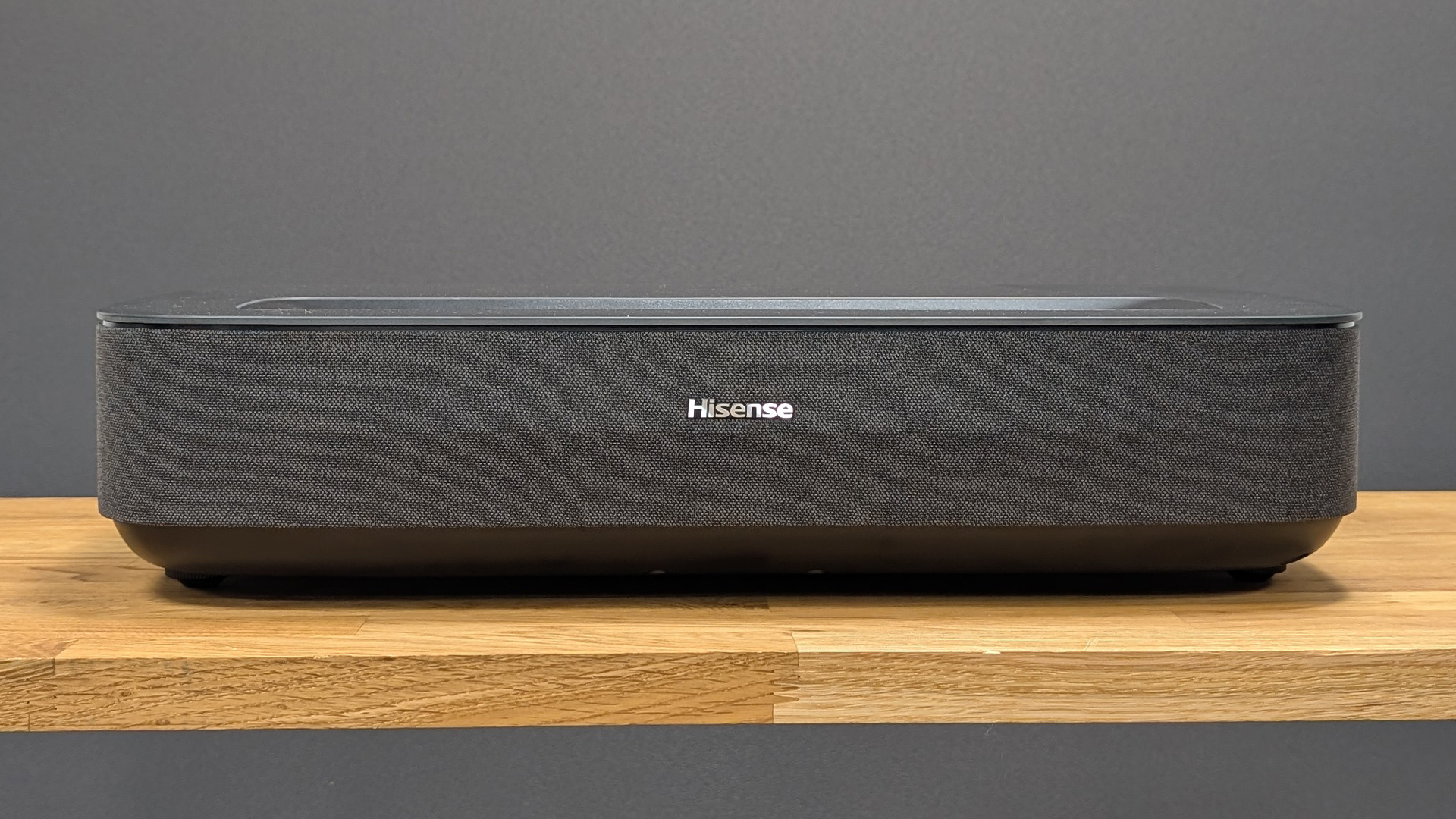What Hi-Fi? Verdict
Competitive pricing, excellent features and a balanced picture make the PL2 a fantastic option for movie fans
Pros
- +
Balanced and consistent picture
- +
Good dark detail
- +
Short throw distance
Cons
- -
Middling upscaling
- -
Average audio
- -
Limited to 4K/60Hz
Why you can trust What Hi-Fi?
The Hisense PL2 is one of the firm’s latest ‘Laser Cinema’ products, which is the fancy term the brand uses for its ultra short throw (UST) projectors.
It aims to offer home cinema fans a discreet way to enjoy a 150-inch screen experience without the need to sacrifice their entire living room to a TV that size.
The PL2 is also a direct successor to the Hisense PL1, which was a staple recommendation in our best projector guide and is our current Award-winner in the UST projector category.
Big shoes to fill, then. So, does the PL2 live up to Hisense’s strong track record in the UST market? After putting it through our rigorous comparative testing process, here’s what we found.
Price
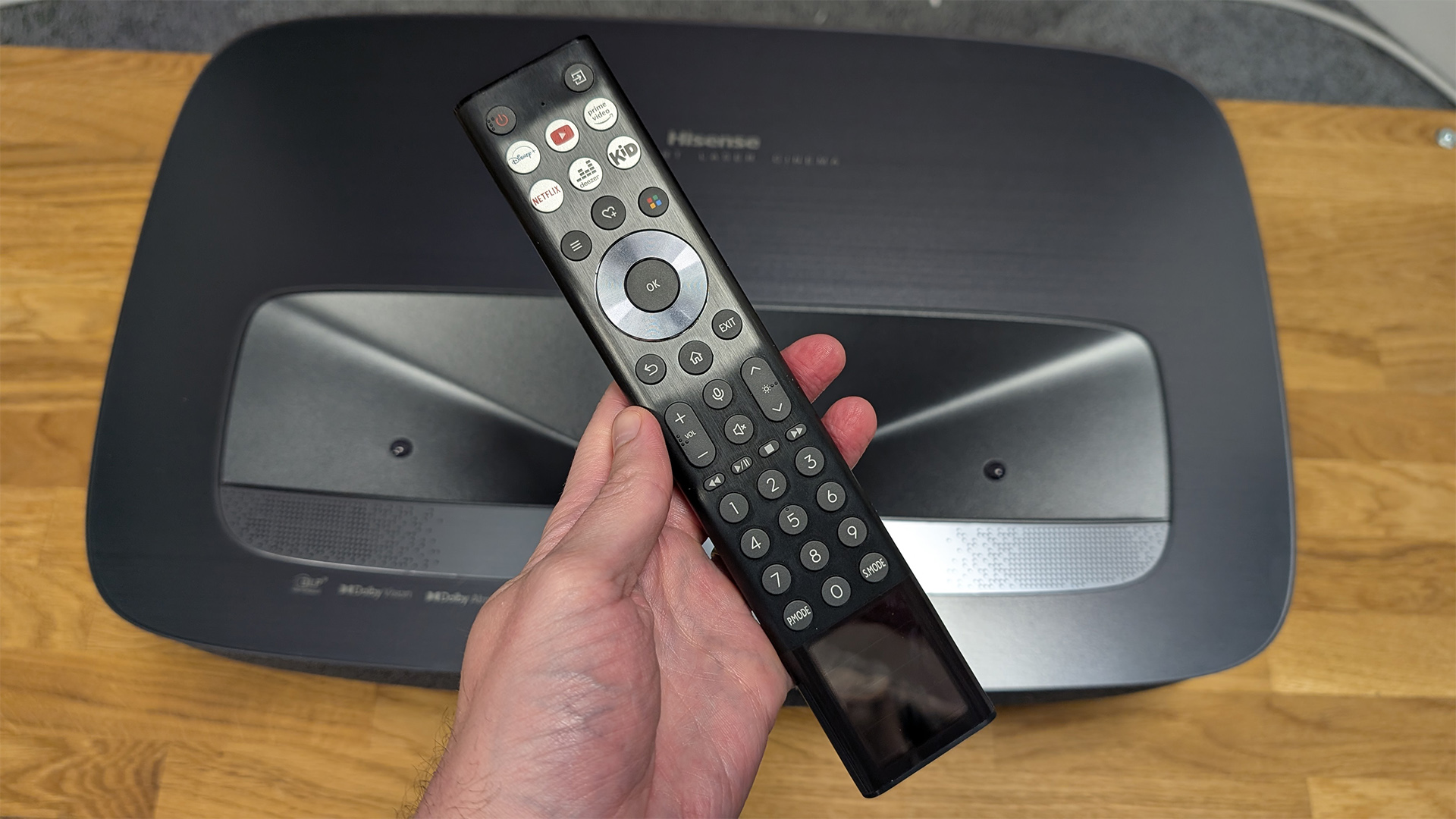
The Hisense PL2 launched at the same £1999 / $2499 price as its predecessor, the PL1.
But discounts are already available, and you can generally pick one up for around £1799 / $2000.
There are a number of cheaper UST models around from lesser-known brands, but all of the units that have passed through our viewing rooms recently cost considerably more.
The latest hi-fi, home cinema and tech news, reviews, buying advice and deals, direct to your inbox.
The Award-winning PX3-Pro that sits above the PL2 in Hisense’s ‘Laser Cinema’ line of premium USTs retails for £2499 / $3499 / AU$4499. The Xgimi Aura 2 we reviewed in January costs a similar £2459 / $2699 / AU$6399.
The original Xgimi Aura, which is currently available for £1299 / $1499 / AU$4180 thanks to some huge discounts, is the only real rival we’ve tested that you can buy for less.
This makes the PL2 a strong proposition for home cinema fans, especially considering its spec upgrades over the PL1.
Build
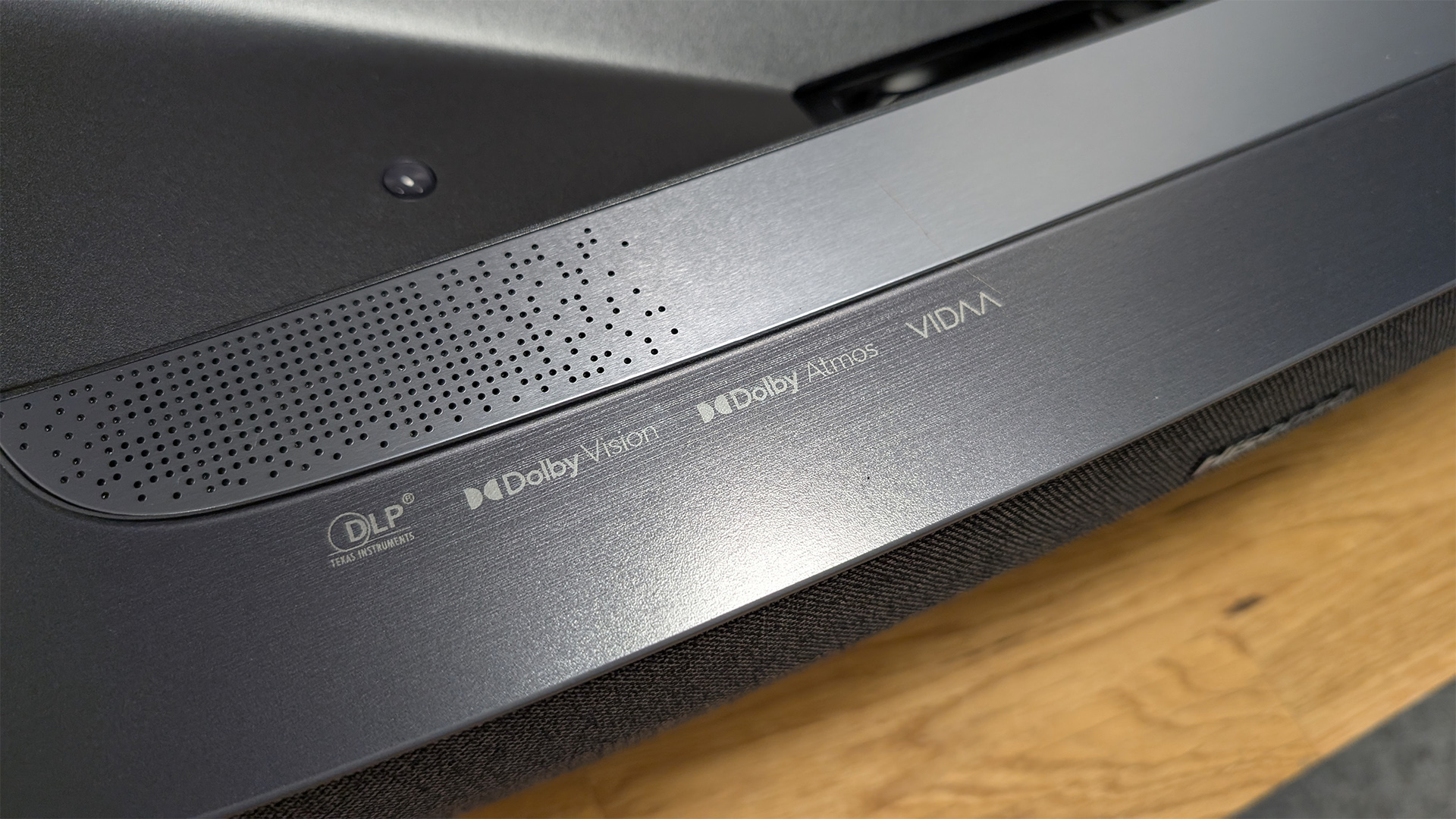
UST projectors are designed to fade into the background. Hisense has clearly designed the PL2 with that in mind and chosen to stick fairly closely to the PL1’s blueprint.
There’s the same mesh front grille and triangular cutout vents on the sides that give it an understated look. You’ll see the same 15W Dolby Atmos-ready drivers as well.
There are some differences between it and the PL1, however. Putting the two next to each other, we discover that the PL2 is slightly smaller than its predecessor. Measuring in at 12 x 53 x 34cm (hwd), the PL2 is a smidgeon shorter, thinner and narrower than the 16 x 55 x 37cm PL1.
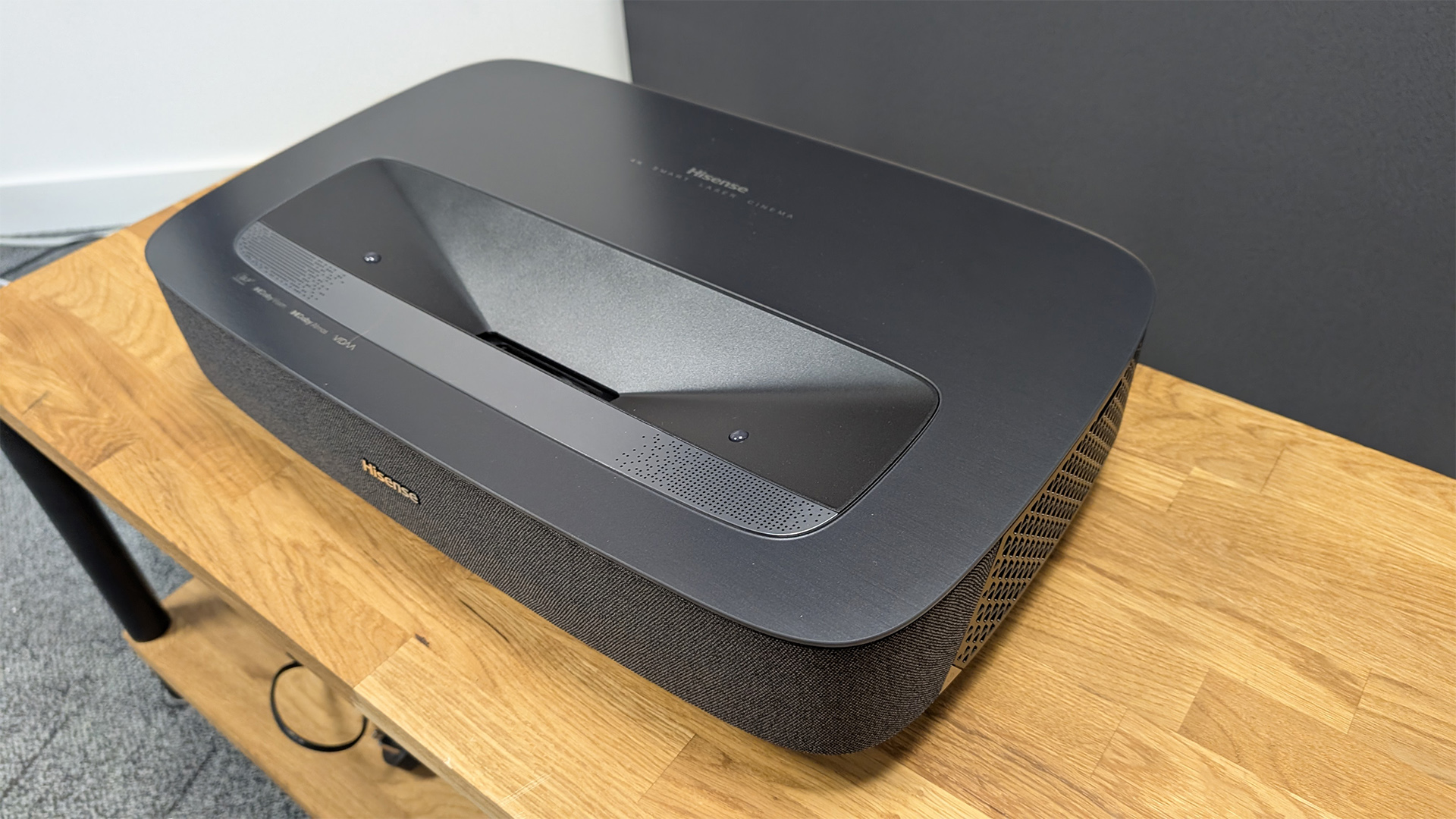
Resolution 4K (3840 x 2160)
HDR Dolby Vision, HDR10+, HDR10, HLG
Light source 4K Smart Laser Cinema
Operating system VIDAA U7
Picture size 80-150 inches
Contrast 3,000:1
Brightness 2700 ANSI lumens
HDMI 1x HDMI 2.1, 1x HDMI 2.0 with ARC
Considering quite how much hardware Hisense has packed into the unit, this is impressive and makes the PL2 wonderfully easy to discreetly place in any living room without it becoming a focal point.
The latter point is important as, despite our constant cries for change, like most of the USTs we review, the PL2 doesn’t sport a physical lens control. Once again, you have to rely on its slightly finicky keystone and digital picture correction to set it up.
An auto-correction service tasks you with placing the projector, lighting up some guidelines with the screen you’re using and then taking a photo of a correction grid, which you then upload to a Hisense website.
After that, it’s meant to automatically adjust its picture. We say “meant”, as after a dozen attempts we still had to then make manual corrections using the adjustable feet keystone controls to get the best results.
Features
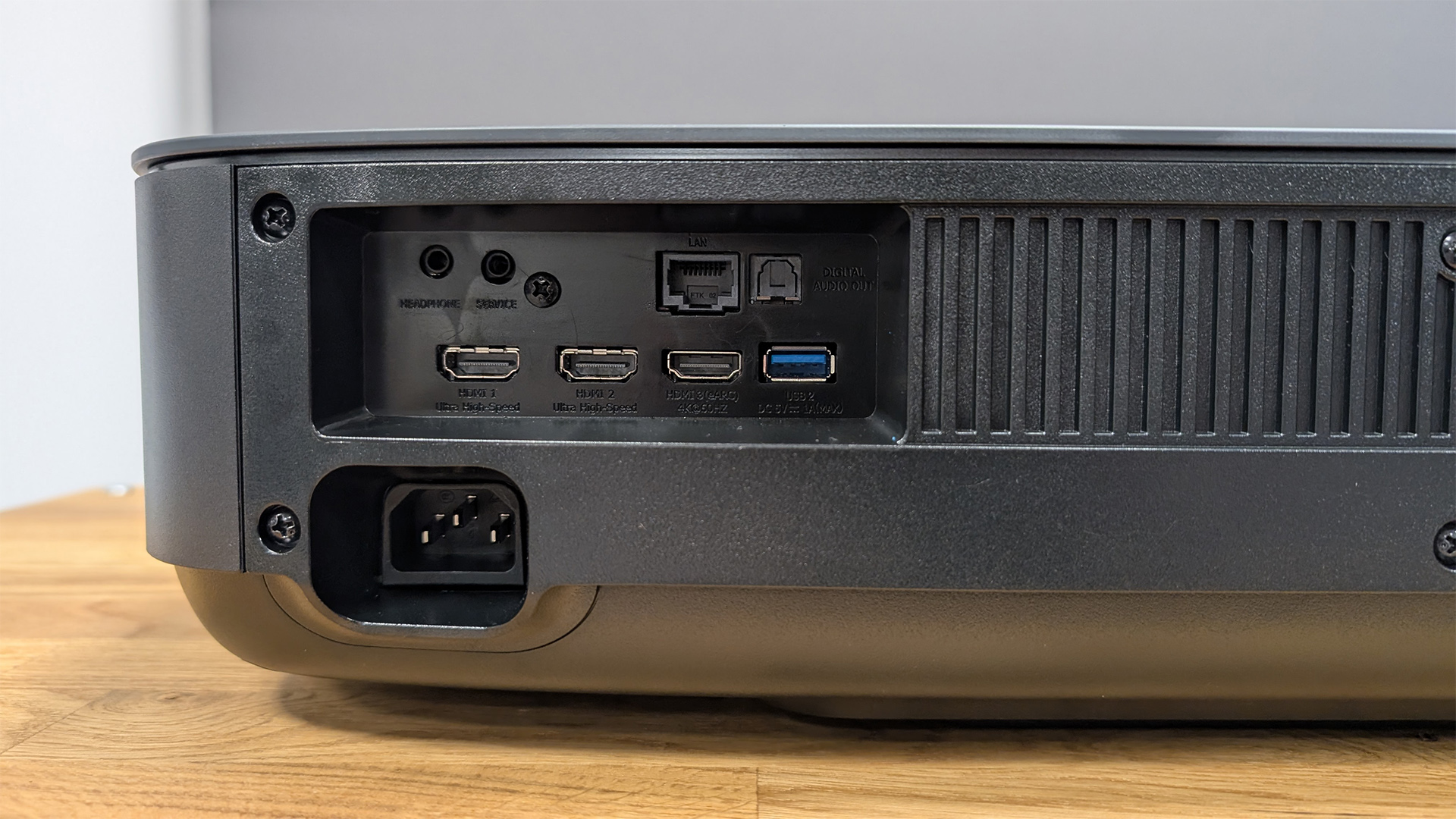
Despite looking very similar to its predecessor, the PL2 has had a wealth of technical upgrades.
For home cinema fans, the most obvious is its ability to project a much larger 80-150-inch picture. By comparison, the PL1 tapped out at 120-inches.
Though it uses the same Hisense X-Fusion Laser Technology, which is branding slang for “laser light source”. Hisense has also raised maximum brightness to 2700 ANSI lumens. That is a big upgrade on the PL1’s 2100 lumens, and it should allow the new model to operate in more challenging, brightly lit conditions.
It also improves the unit’s claimed contrast ratio, raising it to a claimed 3000:1. The laser lifespan is still apparently 25,000 hours. The use of a new DLP chipset also brings a few connectivity improvements, particularly for gamers.
On the PL2’s rear, you’ll find two HDMI 2.1 inputs, one with eARC. These are complemented by a basic HDMI 2.0 input, plus ethernet, USB 3.0 and USB 2.0 sockets.
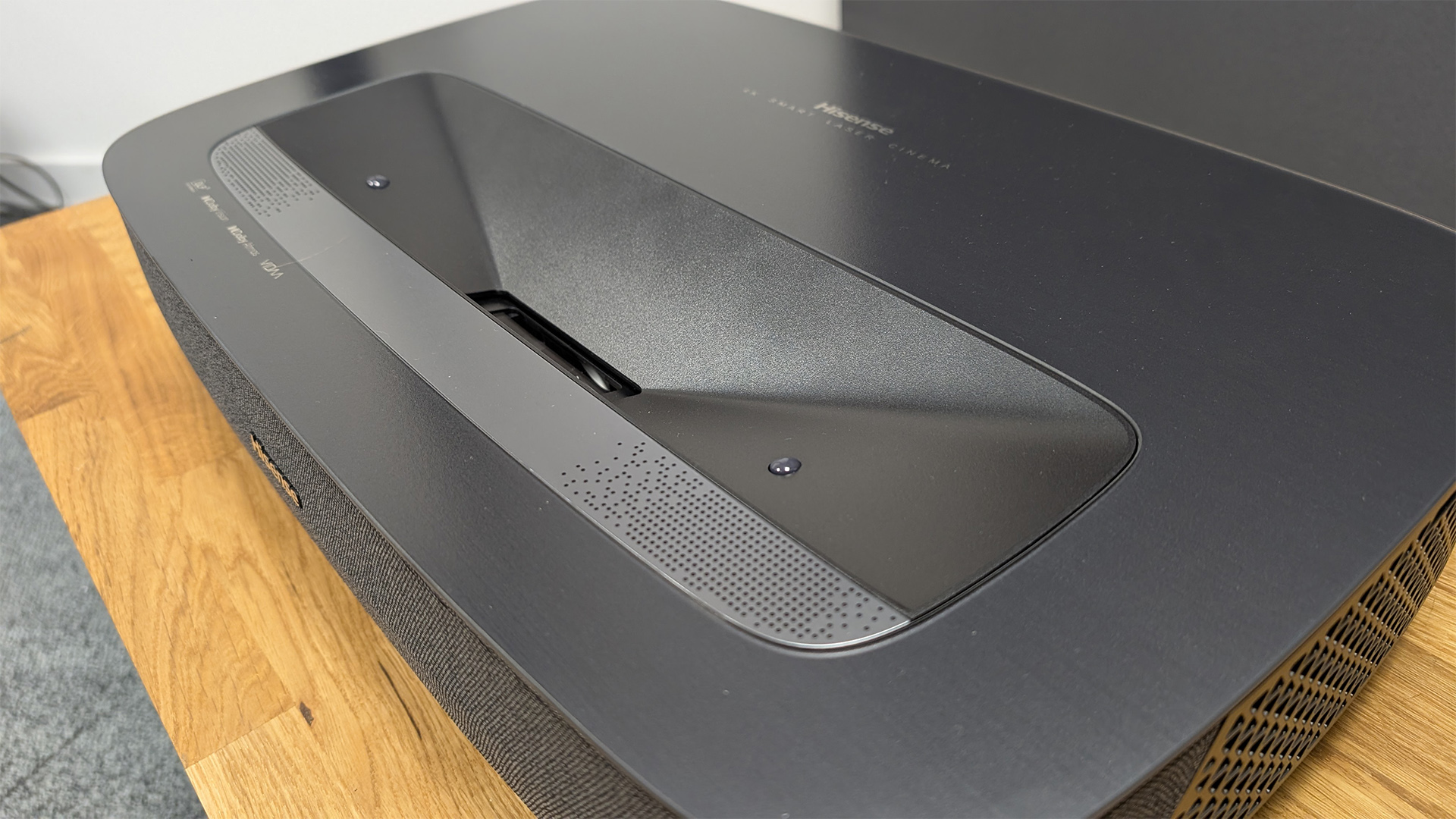
The improvement here over the PL1 is the additional HDMI input, which gives you more options for connecting a 4K Blu-ray player, AVR or Dolby Atmos soundbar.
Despite the presence of so-called HDMI 2.1, the Hisense PL2 can still only handle 4K signals at 60Hz, so there’s no 4K/120Hz gaming on the cards. However, the projector can handle 1080p signals at 120Hz, giving gamers the option to sacrifice resolution for responsiveness.
The projector’s game mode, which activates the moment it detects a console is connected, measures in at 30ms, which isn’t on a par with most modern equivalent priced TVs, but should be fine for most players.
Outside of this, the only thing that would make the PL2 better for gamers is Dolby Vision gaming HDR support, but that would be a stretch at this price. HDR support is otherwise solid, with the PL2 playing nice with Dolby Vision, HDR10 and HLG.
HDR10+, which is a variant of HDR10 that optimises the projector brightness and colour settings at a frame-by-frame level, is another welcome addition.
Our review unit runs using Hisense’s VIDAA U7 software, but US buyers will get Google TV. VIDAA is a little clunky to navigate but features solid app support. All the usual suspects, including Netflix, Disney+, Amazon Prime Video and Apple TV+, are present and run correctly.
These specifications put it within a hair’s breadth of matching its more expensive sibling, the PX3-Pro. The only big difference being the latter’s use of Hisense's more advanced Trichroma RGB laser light tech.
Unlike the base laser used on the PL2, this uses separate red, green and blue lasers to project images, in a bid to deliver a wider, more accurate gamut of colours.
Picture
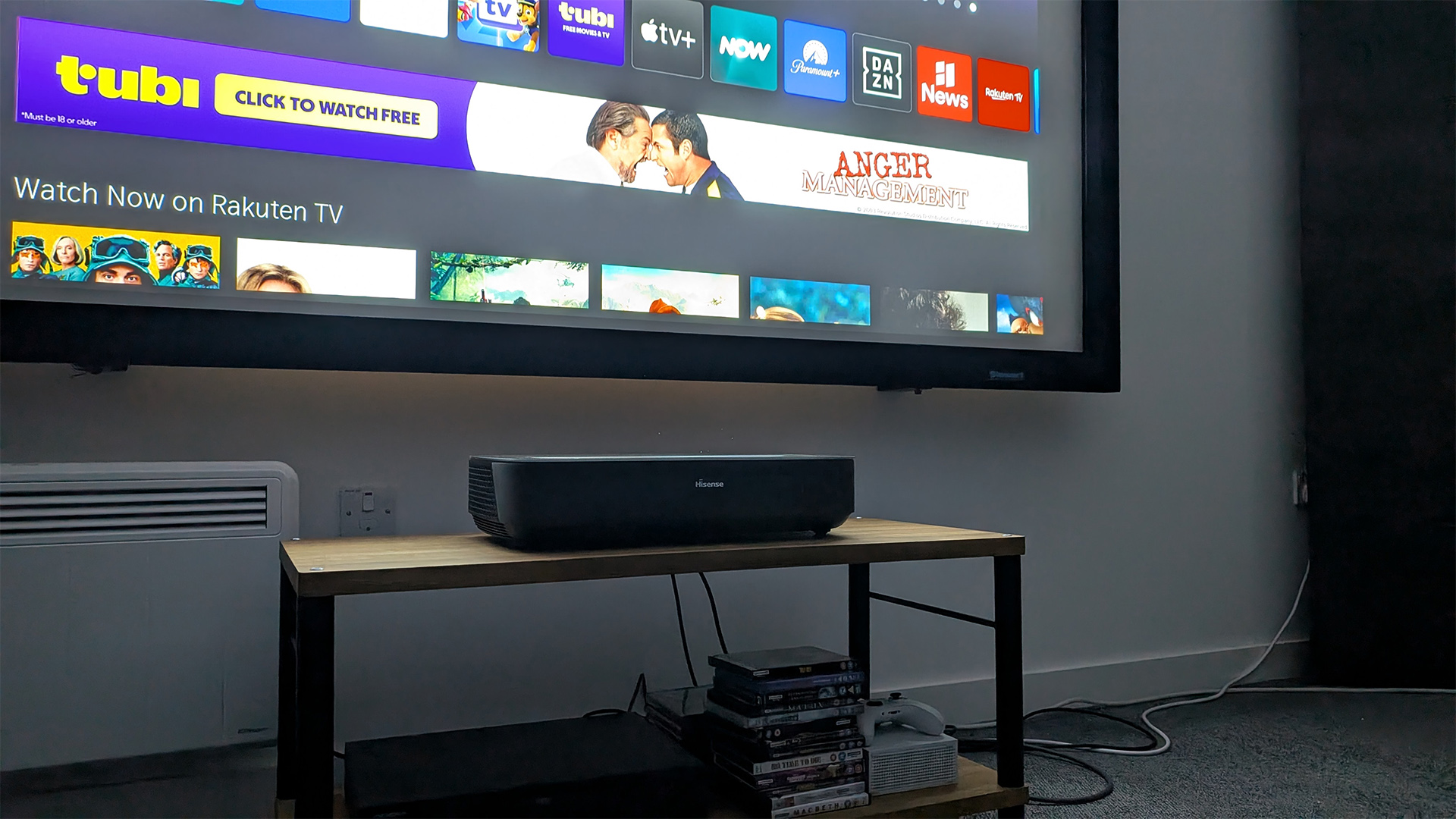
The PL2’s wealth of technical upgrades over the PL1 directly translate into much improved performance. So much so that it makes older Award winners, including the PX3-Pro, seem a little less impressive.
The projector’s settings do need some manual tweaking for the best results. Its out-of-the-box standard settings make a bit of a dog’s dinner out of our Dune: Part 2 4K Blu-ray. In its standard settings, the movements of the Fremen fighters suffer from the 'soap opera' effect and lack impact. A soldier jumping to stab his enemy looks more like a ballerina floating through the air than a violent freedom fighter.
The Warm 1 colour profile gives skin tones a touch too much yellow, and ghost frames sneak into the Ornithopter vehicles' buzzing wings. After some experimentation, we settle on the Filmmaker mode with motion and noise reduction settings at their lowest, dynamic tone mapping on and the Warm 2 colour profile, which we find gives the best results.
Once done, the picture is among the best you’ll find on a UST at this price. The desert suits have a pleasing amount of detail. Even the Harkonnen soldiers' suits, which show up as pitch black on rivals, including the Xgimi Aura, have a pleasing amount of detail.
The additional brightness gives explosions and the desert sand noticeably more impact and vibrancy compared with the PL1, which was best in class at this price less than a year ago. Peaks are higher, but still controlled, and there’s a nice hue of orange at the explosion's core that appears as pure white on the older model.
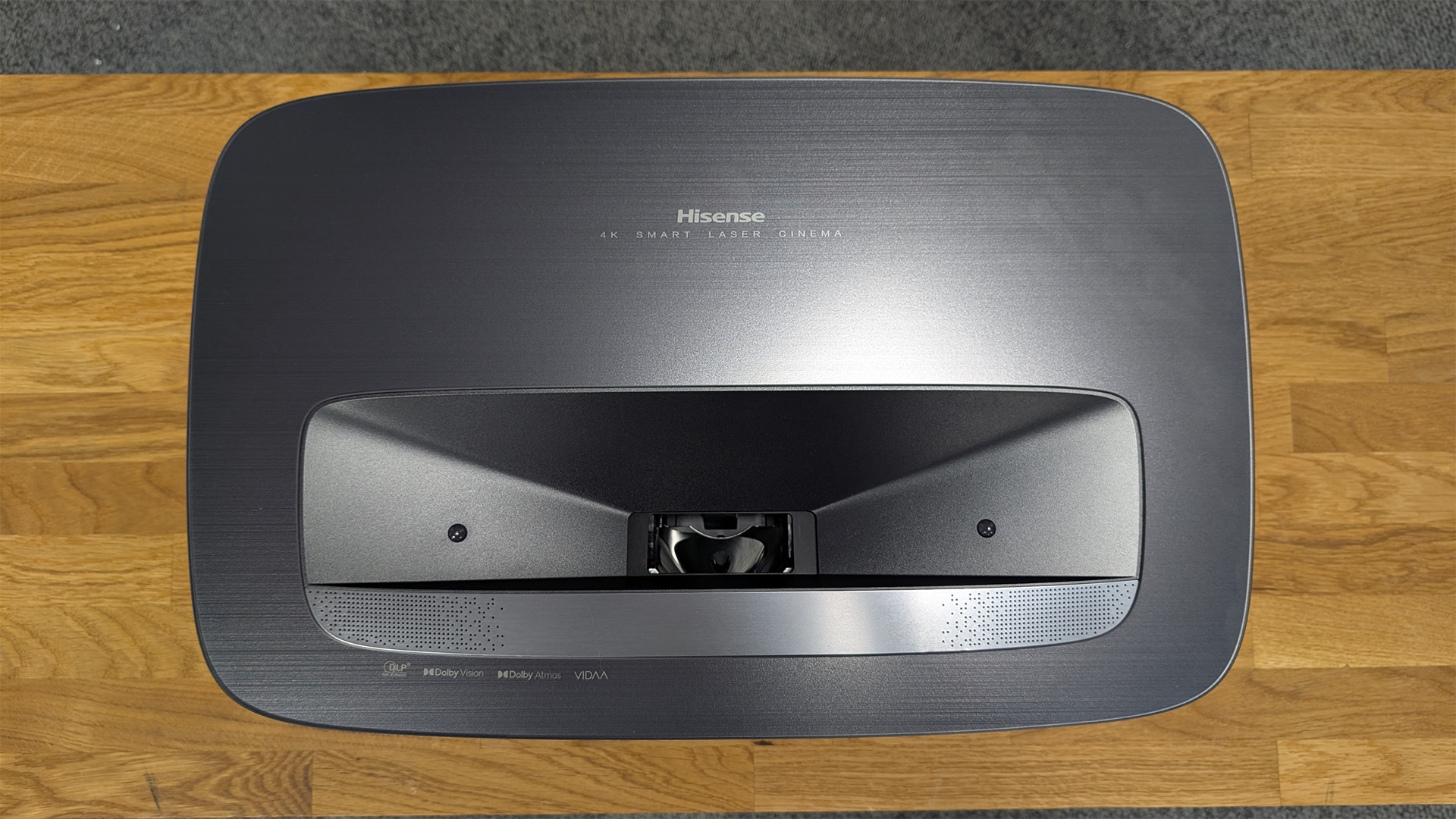
Moving to our Blade Runner 2049 4K Blu-ray, there is a minor blip where the PL2 momentarily raises the picture’s brightness and looks far too grey. This is indicative of its generally middling black level. But, the unit otherwise delivers a good amount of black detail as Sapper Mortan enters the dilapidated, near pitch black farmhouse.
We prefer the slightly grey tone with more detail to an overcranked contrast that cuts swathes out of the picture that the director wants us to see.
The only big compromise is that during dim scenes, the projector struggles to offer the same colour vibrancy and three dimensionality as the PX3 and PX3-Pro, which is to be expected given the different laser systems in use.
Morton’s cheeks don’t have as much red, and there’s less of a range of tones between the darkest and lightest parts of the picture as he stands next to a window. This makes the PL2 look a tad flat by comparison, during dark scenes in particular.
Thankfully, this appears to be limited to particularly difficult scenes with a mix of intense dark and light sections. Colours in Barbie have enough pop and vibrancy to do the intentionally overbaked, cartoony movie justice.
The same is true when switching to Star Wars: Skeleton Crew in Dolby Vision streamed on Disney+. The light sabers, zapping laser blasters and sparkling space background all hold a pleasing vibrancy and impressive peak brightness.
Upscaling remains a challenge for the PL-range, though. True Grit’s opening scene struggles with the intense mix of bright and dark segments as the camera zooms in on a dead body in front of a porch at night time. There’s noticeable noise in falling snow, too.
The film’s intentionally grainy quality causes some occasional noise, even during standard daytime scenes, ever so often distracting from the movie.
Thankfully, the issues aren’t as pronounced when streaming less demanding SDR content. Early episodes of It’s Always Sunny In Philadelphia on Netflix look as they should, as does Ru Paul’s Drag Race UK on iPlayer.
Sound
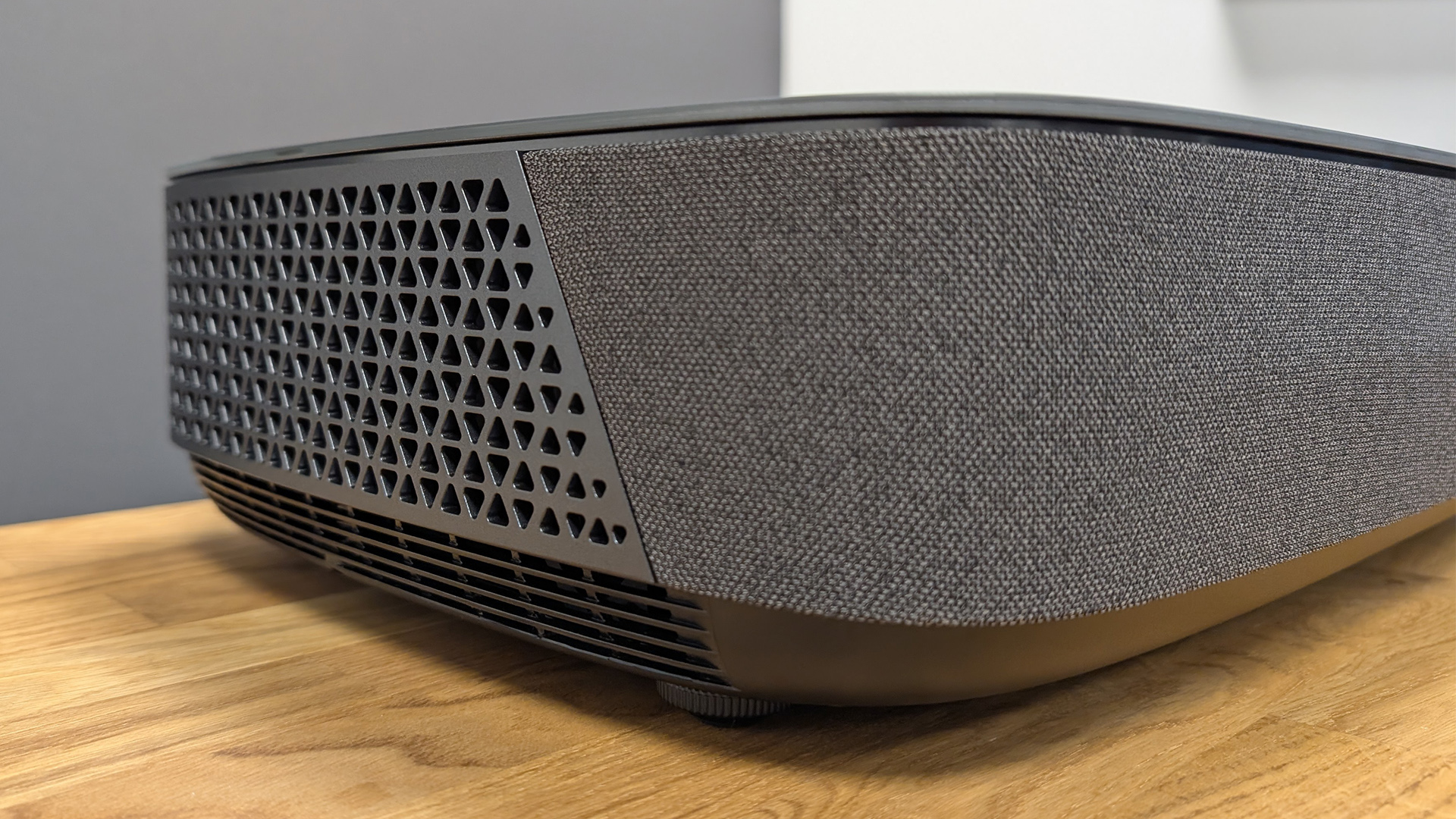
The PL2’s built-in twin 15W sound system makes this one of the better audio performances we’ve experienced on a UST, but it's still far from perfect.
This is largely because the speakers seem to accept their limitations and never overstretch, as many rivals' speakers do. Though the system is marketed as Atmos, in its Standard mode the audio remains firmly centrally placed with no real sense of height or width.
The same is true of its Theatre mode, which rather than offer a sense of left or right positioning, let alone height, separates different parts of the frequency range a little better.
Watching a difficult scene in Blade Runner 2049, where K converses with a hologram moving around his apartment, though, there’s next to no directionality. Still, the voices are clear and hold a distinct forward position compared to background noise.
Dialogue heavy scenes in Oppenheimer are equally impressive, with characters’ voices remaining audible, even with heavy rumbling background noise.
The low-end is undeniably weak, however. During our standard Blade Runner 2049, scene two stress test, the speaker gives up the ghost. Within seconds of the booming synth soundtrack starting it distorts, and when turned down generally sounds too timid and underpowered to do the track justice.
This makes it a good performer by UST built-in speaker standards, but nowhere near good enough for proper movie watching. If you want the best results, budget for a separate speaker system if you don’t already have one.
Verdict
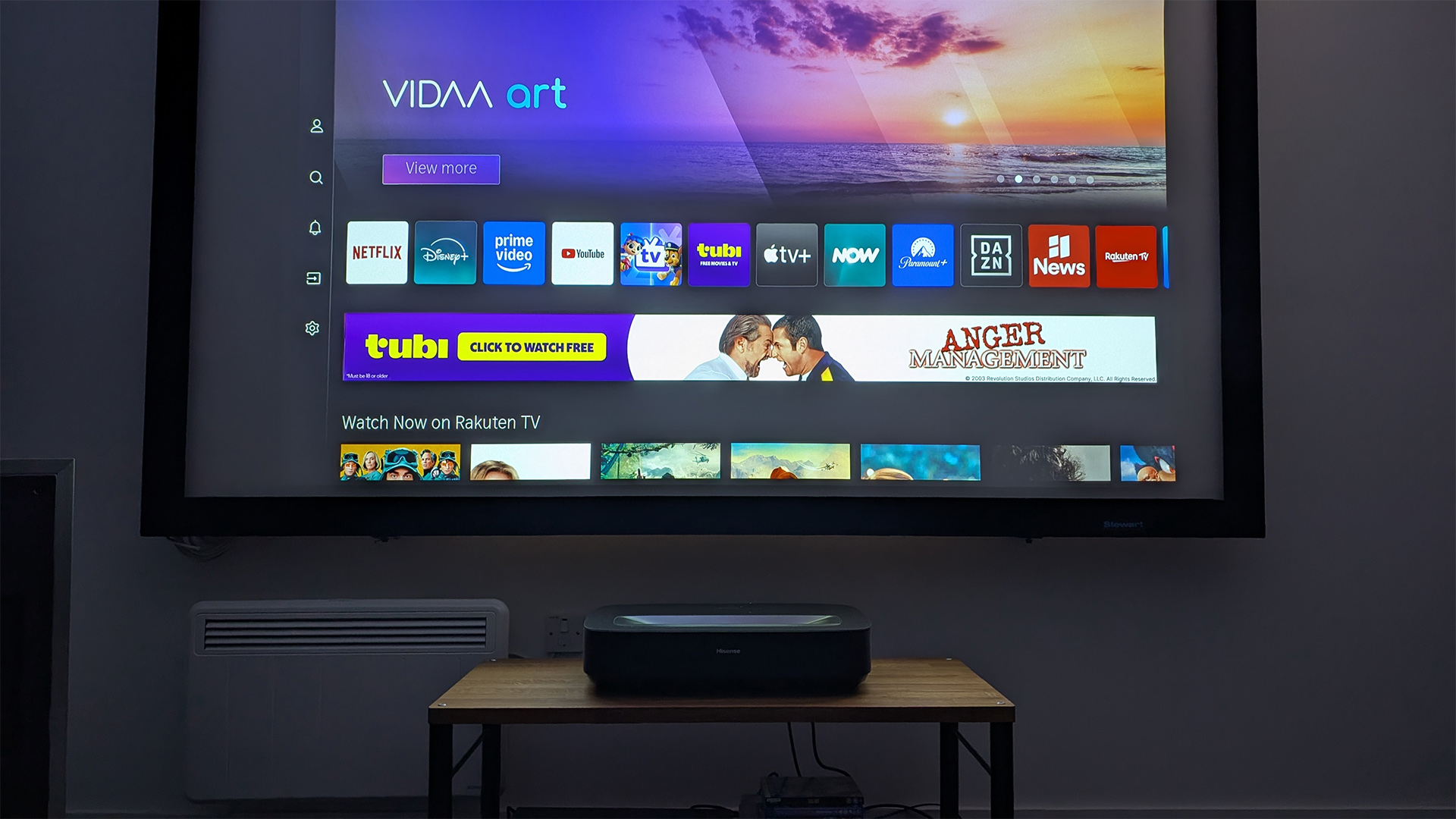
The PL2 is the best UST we’ve reviewed from a performance-per-pound/dollar perspective.
Does it offer the highest peak brightness or deepest black levels currently available? No. There are more accomplished performers by these metrics if you are willing to spend more.
But Hisense’s focus on delivering a balanced picture that accepts the shortcomings inherent to a UST lets the PL2 offer a consistent, controlled picture that never distracts from what’s playing on screen.
This, plus its competitive price and advanced features help the PL2 punch well above its weight and make it an easy recommendation for any movie fan on the hunt for a UST projector.
SCORES
- Picture 5
- Sound 4
- Features 5
MORE:
Read our review of the Hisense PX3 Pro
Also consider the Xgimi Aura
Read our Epson EH-TW7100 review
Best projectors: budget, 4K and ultra-short-throw

Alastair is What Hi-Fi?’s editor in chief. He has well over a decade’s experience as a journalist working in both B2C and B2B press. During this time he’s covered everything from the launch of the first Amazon Echo to government cyber security policy. Prior to joining What Hi-Fi? he served as Trusted Reviews’ editor-in-chief. Outside of tech, he has a Masters from King’s College London in Ethics and the Philosophy of Religion, is an enthusiastic, but untalented, guitar player and runs a webcomic in his spare time.
- Lewis EmpsonSenior Staff Writer
You must confirm your public display name before commenting
Please logout and then login again, you will then be prompted to enter your display name.
